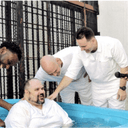
Children of family members who have been sentenced to death or executed are among the most hidden trauma victims of capital punishment. To help address their unique mental health needs, the National Child Traumatic Stress Network (NCTSN), an organization dedicated “to rais[ing] the standard of care and improv[ing] access to services for traumatized children, their families and communities throughout the United States,” has released a new treatment resource that offers guidance to professionals who work with children affected by the death penalty.
The mental health guide, Children Who Are Impacted by a Family Member’s Death Sentence or Execution: Information for Mental Health Professionals, was produced in association with Clinical & Support Options Inc. and the Texas After Violence Project and was released in December 2021. It provides assistance to mental health investigators and providers in identifying issues faced by children whose parent or other family member are on death row or have been executed.
The guide helps service providers recognize the numerous types of trauma the children may be experiencing and the complicated emotions with which they are dealing. It then offers suggestions on ways to support the children in dealing with their feelings. A child with a family member on death row is likely to “be experiencing cycles of emotional ups and downs as their family member goes through the death penalty litigation process,” the NCTSN guide says, which can last many years and “include repeated cycles of execution date, last-minute stay of execution, and then another execution date.” It recommends that providers “recognize the effect of this rollercoaster on the child’s and family members’ mental and physical health and take that into account in diagnosis, treatment planning, and psychoeducation.”
The death penalty’s traumatic impact on a child can be significant and long-lasting, NCTSN warns, “even when an execution happened before the child was born, or in cases where the familial connection was not close.”
The emotionally damaging events these children have experienced include having “witnessed others calling for or cheering their family member’s death.“ It cites as an example: “one daughter recalled that after her father’s execution, a friend said, ‘I don’t understand why you feel bad, he got what he deserved.’” The children may not feel like they have the “’right to grieve,’” may feel “’guilty by association,’” and “experience stigma, judgment, and exclusion from natural supports such as faith or social communities.” They may “have been shamed, harassed, or excluded by others … for having a family member who is on death row or has been executed.”
Mental health professionals should be aware of these dynamics and may need to “examine [their] own beliefs and feelings about the death penalty in general or this case in particular, with outside support if needed, so that [they] can maintain a non-judgmental and supportive stance toward the child and the child’s family.” They should “consider ways to signal welcome and inclusion at the start” and “communicate welcome and acceptance.”
Children affected by the death penalty may “feel a sense of constant threat engendered by the family member’s death sentence.” They may “have distorted or limited information about their family member’s alleged crime or death sentence.” Because of this, NCTSN says, the mental health professional should ask the child’s caregivers what the child knows and does not know.
A family member on death row may cause the child to “have complicated and shifting feelings …, including loving them, being angry, feeling ambivalent or conflicted” and the child may “want different types of contact with the family member at different times.” Mental health professionals should “normalize a child’s experiencing conflicting and ambivalent feelings” and “help children understand their options for contact: letters, phone calls, visits; limited or no contact; right to change frequency or type of contact any time; right to choose who they want involved or supporting them in navigating decisions and logistics about contact.”
Even where children do not themselves have a close connection to the family member who is on death row or has been executed, they may be adversely affected by the impact on other family members and those relatives’ “preoccupation and involvement with that individual’s death sentence or execution.”
National Child Traumatic Stress Network, Children Who Are Impacted by a Family Member’s Death Sentence or Execution: Information for Mental Health Professionals, December 2021.



